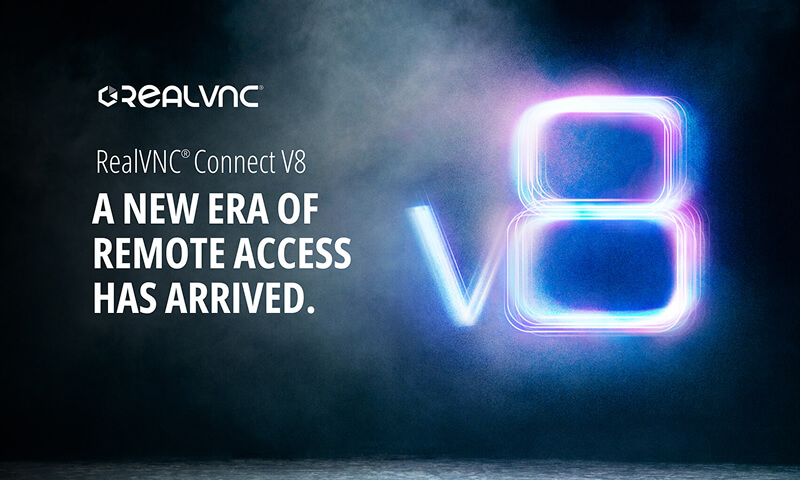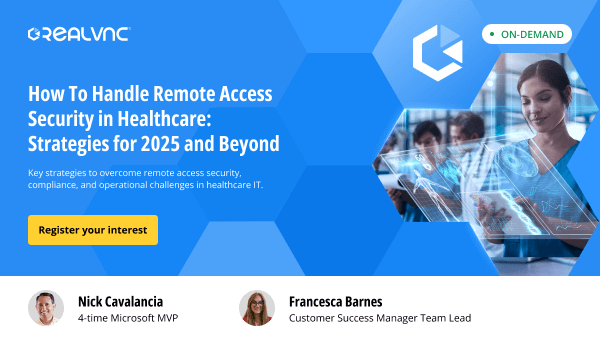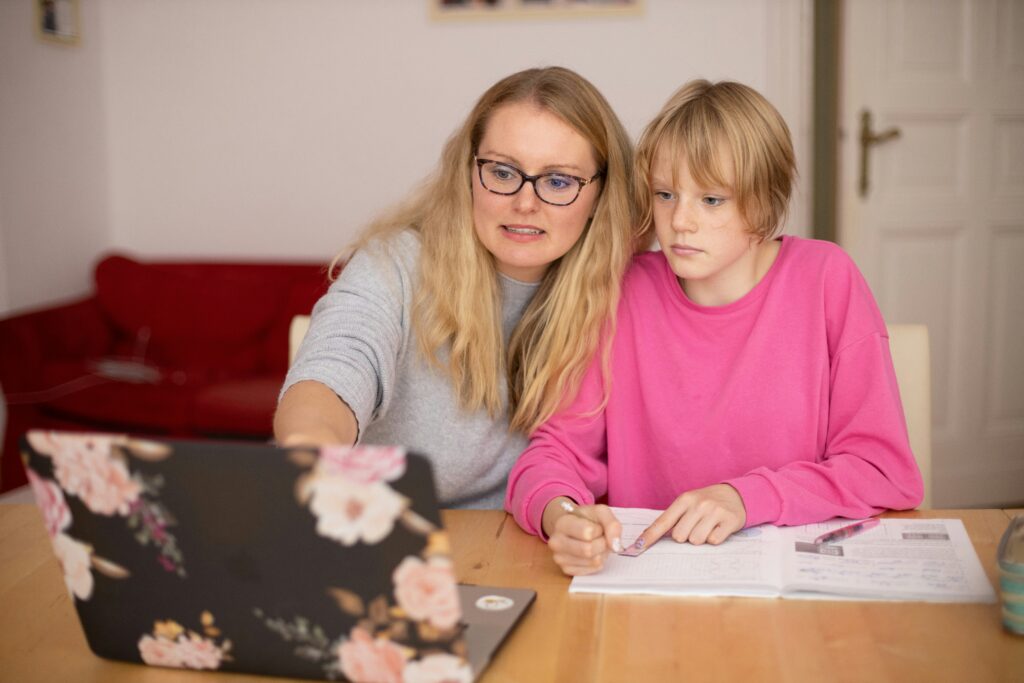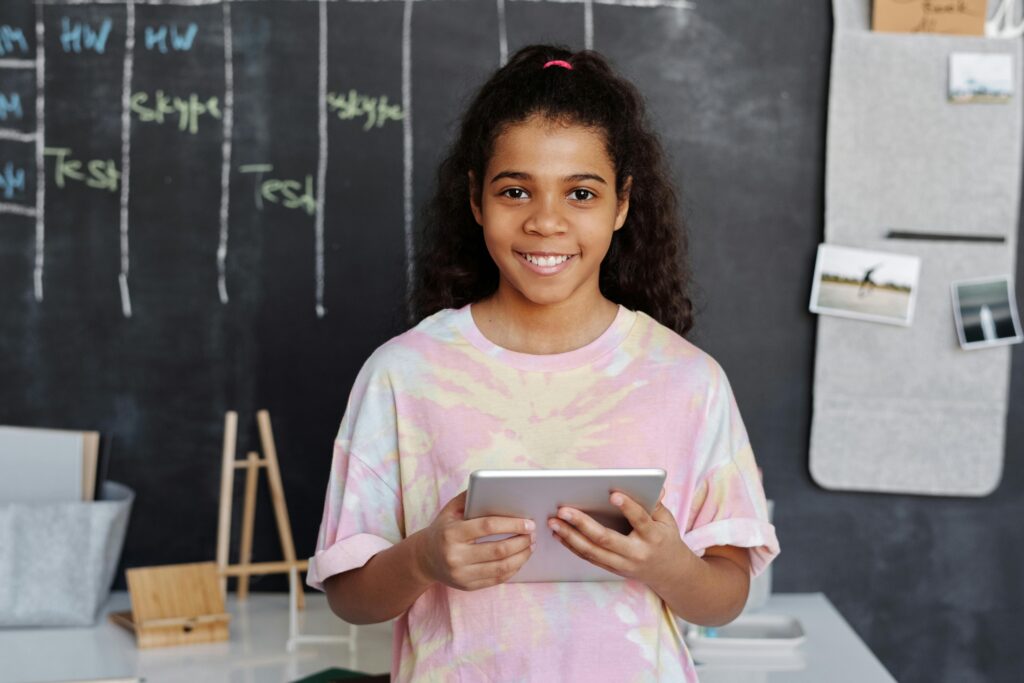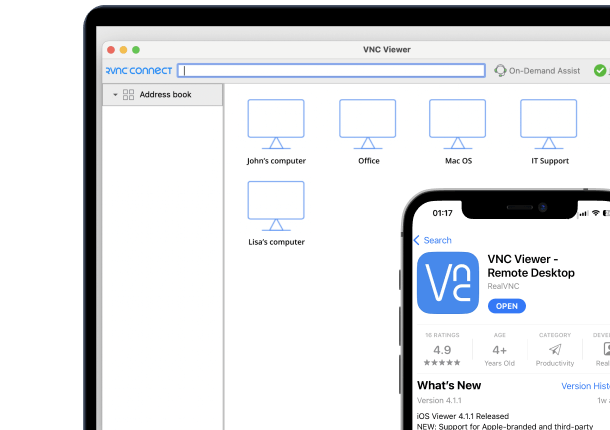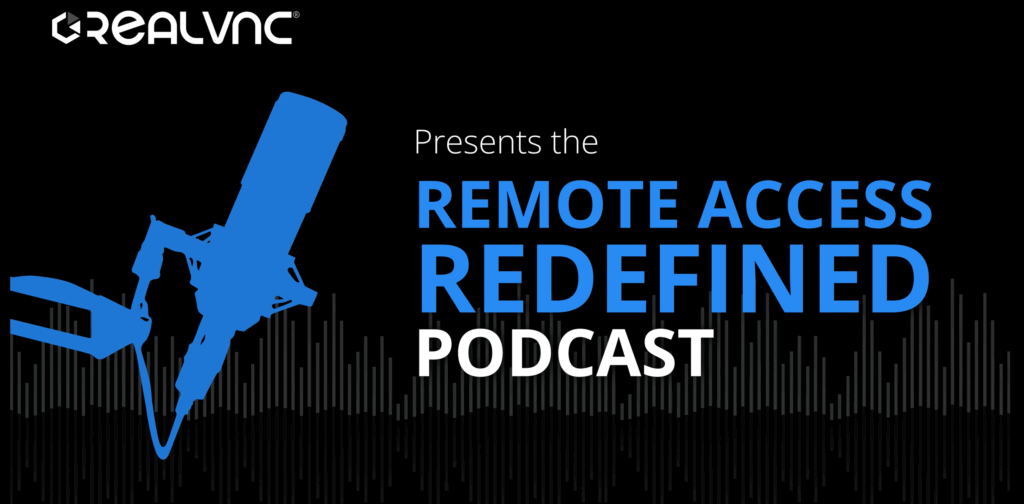Is remote learning the real deal, or are schools and students merely swapping quality education for the convenience of rolling out of bed and straight into class? Schools are investing more in the world of virtual classrooms, so it’s important to figure out how to make online learning actually work.
Educators are using interactive platforms that capture students’ attention and reliable, secure remote access tools like RealVNC Connect to keep classes running smoothly. In this guide, we’ll unpack exactly what’s needed to make remote learning work while making it all seem a bit less like homework.
What Exactly Is Remote Learning, and How Does it Work?
Remote learning, often called “distance education,” is essentially the school minus the classroom. It brings together students and educators through digital platforms, allowing them to interact and learn without needing to be in the same physical space. This typically involves using tech like video conferencing, discussion forums, and online assessments to give students a classroom feel, without the squeaky chairs or tiny desks.
While remote learning felt like something thrust upon us in the past (mainly during the COVID-19 era), dedicated virtual learning environments take things to the next level and have grown into a $354 billion industry.
Here’s a quick breakdown of how remote learning usually plays out:
- Virtual classrooms: Teachers hold live classes or interactive workshops through platforms like Zoom, Google Meet, or Microsoft Teams.
- Learning management systems (LMS): Platforms like Canvas, Google Classroom, or the free and open-source Moodle LMS. These centralized lesson materials, assignments, and grading help educators provide feedback without having to trawl through student emails.
- Digital collaboration: Students can team up through discussion boards, shared documents, and group projects. This gives students the chance to interact socially, even if they’re on different continents.
If it’s done well, online learning effectively brings flexibility and lets students work through material at a pace that suits them. It keeps learners connected, no matter where they’re located in the world.
What Are the Key Benefits of Remote Learning for Schools and Students?
One of the biggest perks of remote learning is that it cuts down on school expenses. If students log in remotely, there are fewer classrooms to heat and less physical infrastructure to maintain. By switching to virtual classrooms, schools can redirect funds towards better educational resources and supporting their teachers.
Students also see numerous benefits. They have the freedom to learn at their own pace and on their own schedule. For college-level students, 71% of whom balance full-time work, this means greater flexibility between study and job demands. Cloud-based lessons mean easy access to coursework from anywhere, making education convenient and accessible.
Using remote access solutions like RealVNC Connect enhances this learning experience even further. Teachers can securely send files, like lesson notes or videos, in the middle of a class, and high-quality streaming means lessons run without annoying lag.
Common Digital Education Challenges and How to Overcome Them
Of course, the transition from traditional to digital isn’t without its hurdles. Keeping students engaged and managing limited face-to-face interaction are notable challenges. There’s also the perception that online learning is somehow less valuable than traditional methods. Yet, prestigious institutions like Harvard, Yale, and Columbia now offer extensive virtual learning programs, quickly dismantling that outdated stereotype.
Maintaining engagement means using interactive platforms that enable real-time collaboration, track student participation, and help educators tackle issues proactively. Security also tops the priority list. Schools must protect sensitive student data from unauthorized access, especially when BYO devices like the home computer are involved.
Tools like RealVNC Connect use enterprise-grade end-to-end encryption (e2ee) and reliable authentication protocols, allowing schools to confidently deliver out-of-the-box remote education from the very first session.
Effective E-Learning Teaching Methods and Strategies
Great e-learning strategies, especially for online or remote learning, combine interactive lessons, clearly structured digital classrooms, and study techniques that enhance student outcomes. Blended methods mix asynchronous content, such as recorded lectures, with synchronous elements like live discussions and real-time assessments.
Interactive classroom simulations encourage students to explore ideas actively in virtual, risk-free environments, boosting knowledge retention and critical thinking. Structured classroom management, such as clear participation rules, consistent communication, and regular feedback, helps students stay focused and minimize distractions.
RealVNC Connect enhances these methods by providing seamless real-time collaboration for education, simplified remote IT support (which reduces costs), and secure offline or direct connectivity over local networks. Educators can easily deliver engaging lessons, quickly solve tech issues, and maintain consistent student engagement.
Comparing Asynchronous vs. Synchronous Remote Learning Experience and Formats
Choosing between asynchronous and synchronous lectures can make a huge difference in student engagement and learning outcomes. Asynchronous remote learning lets students watch pre-recorded lectures on their own time and access materials when it’s convenient for them.
On the other hand, synchronous sessions are live and in real time. They rely on live videoconferencing and immediate feedback, much like a traditional classroom, but without truly being face-to-face.
Bleeding both methods typically delivers the best of both worlds: flexible, self-directed learning with real-time interaction to inject some accountability and maintain motivation. This actually does matter, especially since 36% of students said the home environment was actually the biggest challenge to staying motivated during the pandemic.
Essential Tools and Platforms for Successful Remote Learning Work
Having the right tools can be the difference between a smooth remote learning experience and a frustrating day of “Can you hear me now?” moments. Platforms like Google Classroom and Zoom help keep things organized and interactive, while LMS tools like Canvas and Moodle pull everything like assignments, grades, and quizzes into one central hub.
Here are a few tools that can actually make virtual learning work:
- Google Classroom: Great for organizing assignments without the paper piles.
- Zoom: The most well-known platform for live video conferencing, breakout rooms, and the occasional cat cameo.
- Kahoot! A gamification platform that makes learning fun by turning quizzes into games so students barely notice they’re learning.
- Moodle: A free, open-source, and customizable learning management system that allows for local instances. It’s best suited for admins who know their way around Apache and MySQL.
- RealVNC Connect: Gives IT teams managing distributed classrooms remote support to devices to devices with secure file sharing, real-time support, and even offline or direct access without Internet.
When all of these tools come together, they help create a more connected, secure, and manageable remote learning environment for both students and educators.
Best Practices for Designing a Successful Online Curriculum
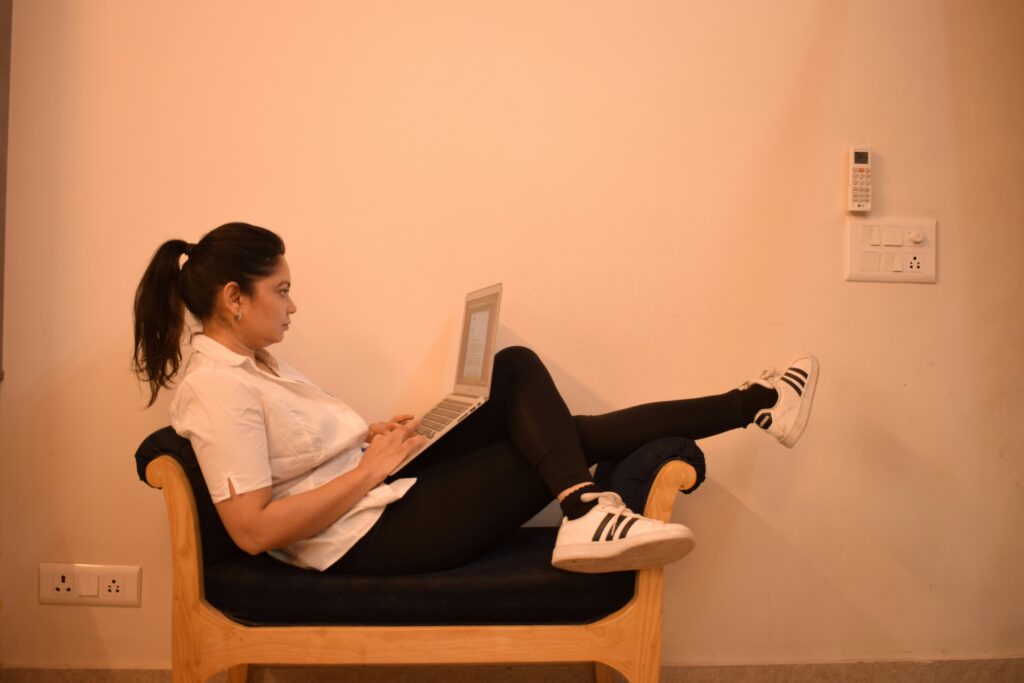
An effective online curriculum starts with clear goals. Setting clear objectives gives structure to your digital course development and helps students know not only what they’re supposed to learn, but what they’ll know by the end.
Interactive content also matters. This can be in the form of virtual whiteboards, group projects, or simulations that let students actually apply concepts rather than just reading about them, especially with students who have disabilities.
Ongoing check-ins through quizzes, assignments, and immediate feedback help teachers monitor student performance and adjust the pace on the fly rather than at the end of the course when it no longer makes a difference.
Creating a Productive Remote Learning Environment
A good remote learning environment can be the difference between a focused student and one who is straight on TikTok as soon as you’re not looking. Setting up the right space helps students stay motivated and on track to get things done. Here’s how to make it work:
- Dedicate a “learning space”: Pick a spot that’s designated for study. It should be separate from where they would normally relax, sleep, or engage in recreational activities.
- Keep distractions to a minimum: Put the smartphone on silent mode, log out of social media, and remove gaming consoles, remotes, and games. A focused space supports a focused mind and imitates a traditional classroom environment.
- Invest in technology: A stable computer or laptop, reliable internet, and access to the right software are definitely required. From the admin side, don’t forget about support. You’ll need tools like RealVNC Connect to help students get set up on their home devices and troubleshoot.
- Get into a routine: You might be learning from home, but that doesn’t mean students can go into holiday mode. Create a schedule that includes breaks and physical activity to help them manage their time, recharge, and stop burnout.
These are small steps, but they help turn a corner of the home into a productive virtual classroom—one that supports focus, consistency, and academic success.
Supporting Students’ Needs in Remote Learning
Just like traditional schooling, remote learning isn’t a universal solution for all types of students. Some may thrive, while others need a little extra help to stay on track. With the right support systems in place, every student has a shot at success. Here’s how educators can help:
- Provide support on an individual basis: One-on-one check-ins over video calls give students a chance to ask questions, talk about challenges, and feel seen—something that’s extremely easy to lose in a distance learning environment.
- Bring out the multimedia: Not everyone learns by rote and reading computer-based text. Mix it up with videos, podcasts, and interactive tools. Visual learners, in particular, tend to absorb far more through dynamic and flashy content.
- Let them go at their own pace: Encourage self-paced learning by allowing students to complete assignments at their own time and own pace. It gives them more control and helps reduce pressure, especially older students who might have a lot of outside responsibilities.
- Create a real sense of community: To prevent students feeling like they just belong to a virtual school, use discussion boards, group chats, virtual clubs, or any online tool you have at your disposal.
- Monitor progress, provide feedback: With online learning, there’s no need to wait until the final exam is done to gauge student progress. Most LMSs allow teachers to get real-time stats and performance indicators. This means they can quickly pivot and adjust their teaching methods when it’s evident something isn’t working.
Supporting different learning needs isn’t easy, but it’s necessary. Remote learning excels where the traditional classroom fails. It makes learning more inclusive, effective, and human.
Supporting Teachers in Remote Learning
Behind every great remote class is a teacher handling lesson prep, learning new tech, and dealing with a dozen tiny squares of distracted students. Supporting these teachers is absolutely essential to the success of remote learning. Here’s how schools can set up teachers for positive results:
- Provide professional development: Ongoing training keeps teachers sharp and helps their skills stay current. This is even more important when it comes to remote learning environments.
- Encourage collaboration: Create student-free spaces for teachers to swap ideas, lesson tips, and helpful resources.
- Provide tech support: We’re not using overhead projectors anymore, which means reliable tech is non-negotiable here. Supporting both teachers and students with BYO devices adds complexity, especially with multiple operating systems thrown into the mix. Supporting Windows, Linux, and macOS, RealVNC Connect is an all-in-one remote access solution that can help IT teams to troubleshoot issues quickly, no matter the device.
- Offer flexible scheduling: Like their students, teachers have a life outside of study. Letting them set their own schedule supports work-life balance and makes room for creativity.
- Recognize and reward excellence: Celebrating teachers who embrace online teaching builds morale and keeps motivation high. Student feedback and performance metrics are great ways to find and reward them.
With the right support, educators can focus less on tech issues and more on creating meaningful experiences for online students.
Enhancing Remote Learning Engagement and Participation
Image: Pexels | Alt-text: A woman watching an online class on an iMac
Keeping students engaged during remote classes isn’t easy. When distractions are a mere browser tab away, it’s easy to see why. However, a few key strategies can make a big difference.
Live sessions and group projects boost connection and social skills while encouraging active participation. A few surprise questions can encourage students tempted to watch YouTube during a class to pay attention.
Regular feedback driven by performance metrics helps students stay on track and know where they stand.
Remote access solutions also play a huge role. Teachers can remotely demonstrate software, fix tech issues they run into all the time, and securely share files. Tools like RealVNC Connect can also bridge the digital divide when it comes to access to technology. It does this by providing screen sharing between teachers and students, eliminating the need for expensive equipment at home.
Academic Performance Metrics & Evaluating Remote Learning Success
Tracking how well students are doing means looking beyond test scores. Here are the ways that remote learning helps to measure success:
- Participation rates: Are students showing up and engaging? A good LMS tracks attendance accurately.
- Assignment completion: If progress isn’t being made, teachers are alerted before it comes down to a last-minute cram session.
- Test results: Smaller and more frequent testing allows teachers to spot trouble before final exams.
- Student feedback: Students can give electronic feedback about what’s working and what isn’t.
Online educational analytics help spot patterns better than humans and highlight gaps teachers wouldn’t otherwise know existed.
Security & Data Privacy in Remote Learning Environments
With remote learning comes data transit, and protecting that data is absolutely crucial. According to cybersecurity experts, last year was the worst on record for K-12 institutions, with a 92% increase in ransomware attacks. Now, more than ever, is the time to get serious about data protection.
To stay protected and compliant with regulations like FERPA and GDPR, schools need:
- Encrypted connections (data at rest and transit).
- Authentication controls.
- Role-based access permissions for staff and students.
RealVNC Connect delivers on all three of these. By default, it comes with enterprise-grade security, including 256-bit AES encryption and strict access management for enterprise plans. It gives schools a way to securely manage remote sessions and devices while protecting sensitive information. This way, education doesn’t come with a security risk.
Future Trends and Innovations Shaping Remote Learning
Remote learning is evolving quickly, with new tech making digital classrooms more engaging and effective. Here’s what is on the horizon:
- Virtual Reality (VR) and Augmented Reality (AR): This tech allows students to immerse themselves in lessons and bring them to life.
- Advanced analytics: Will continue to evolve and help educators personalize content and track their students’ progress in real time.
- AI-driven tutoring: On-demand support that adapts quickly to student pacing and offers guidance outside of regular class hours.
- Microlearning: For students who prefer their lessons in bite-sized chunks, this will help build skills without overwhelming them.
These innovations are making online and remote learning more accessible. Secure remote access tools like RealVNC Connect are there in the background, allowing teachers to integrate these cutting-edge technologies into their remote teaching strategies.
Looking Ahead with Remote Learning
Remote learning has changed the way we think about education. It brings more flexibility and tech-driven tools into the mix for both students and educators. Most importantly of all, remote learning makes education more accessible by bringing the classroom into the comfort and safety of your own home.
Sure, it has its challenges, from keeping students engaged to staying on top of data privacy. But tools like RealVNC Connect help address these by providing secure access, a means of reliable support, and better digital experiences for both staff and students.
If secure remote access is a part of your remote learning strategy, you can download and try RealVNC Connect for free and get started today.
FAQs on Remote Learning
What is remote learning?
Remote learning allows students and teachers to connect through online software and tools instead of sharing a physical classroom. Lessons, discussions, and assessments all happen online. This creates a more flexible alternative to learning in person.
How is remote learning different from learning in person?
Remote learning uses digital tools to deliver lessons virtually across distance. In-person (or traditional) learning happens in a shared physical classroom. Both can follow the same curriculum, but the delivery and interaction methods are different.
Why are so many schools turning to remote learning?
The main benefits of remote learning include flexibility, accessibility, and reduced costs. It allows students to learn at their own pace and gives schools more control over how and when content is delivered.
Is virtual learning just another name for remote learning?
While they are closely related, virtual learning refers to fully structured virtual classrooms. Remote learning includes a mix of synchronous and asynchronous formats. Both keep students online and engaged through digital instruction.
What does a remote learning day look like for students?
A typical school day might include watching pre-recorded lessons, joining live classes, completing assignments, and participating in discussion boards or group projects. Activities vary but often mirror the structure of traditional learning with more flexibility.
Can remote students still interact with each other during the school day?
Yes! Through group projects, video calls, and discussion boards, students can collaborate and connect online just like they would in a classroom setting.
What tools make remote learning more effective?
Platforms like Google Classroom, Zoom, and secure remote access solutions like RealVNC Connect help manage lessons, support tech issues, and keep students engaged.
Do remote learning tools support all learning styles?
They can, and they are often better than traditional methods. With videos, interactive activities, and flexible pacing, digital tools effectively support visual, auditory, and self-paced learners.
